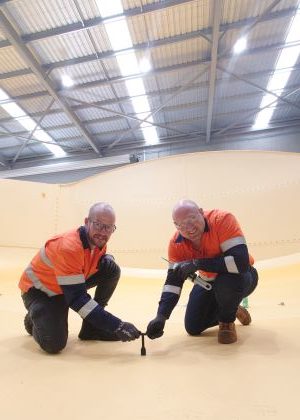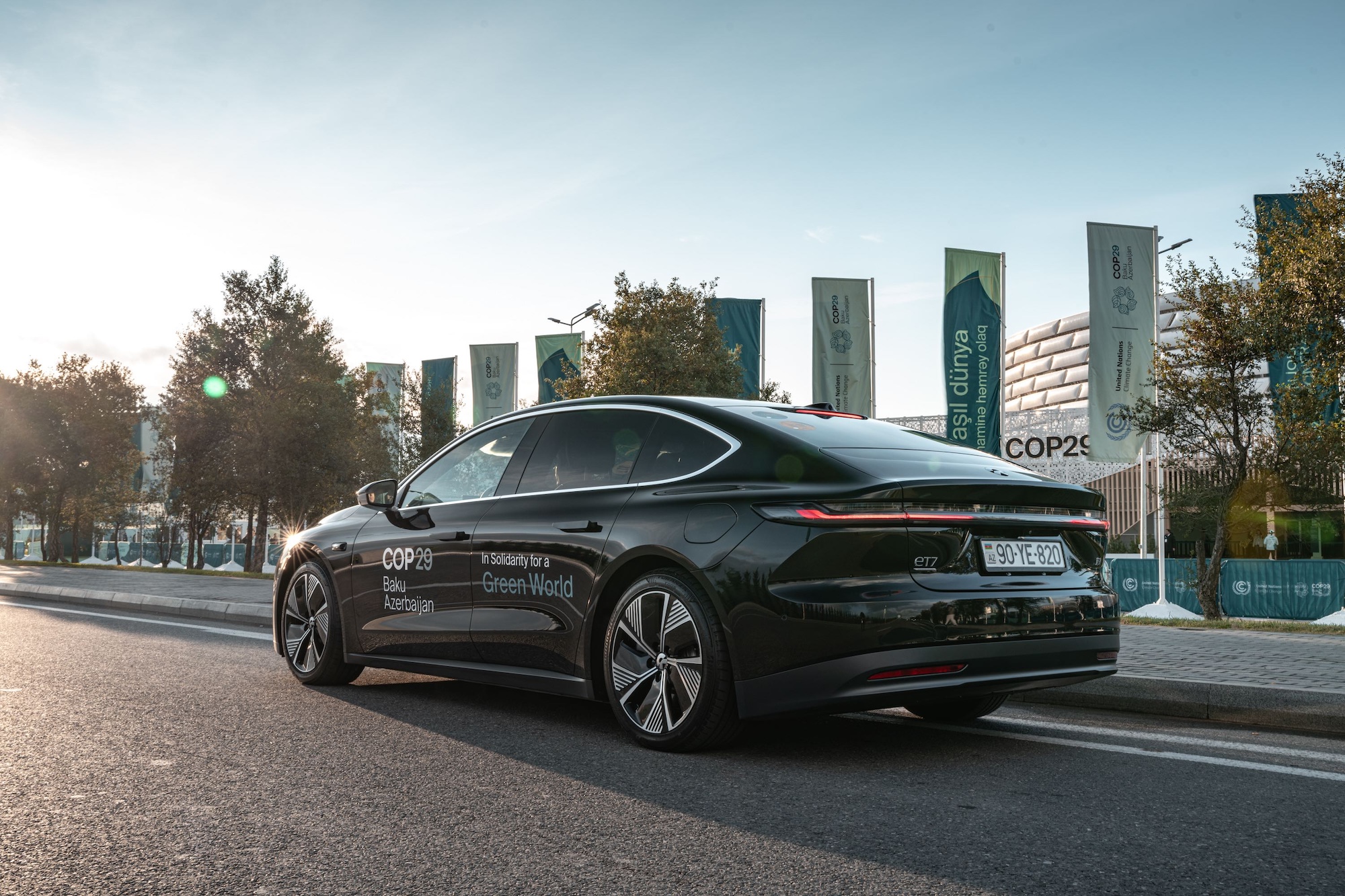President Pat Risner said in an interview on Tuesday February 18 that the scale of the deposit, located in southern Arizona, is large enough to meet US domestic manganese needs.
“Whether suppliers are going to be willing to be completely reliant on one source, that’s a whole separate discussion. Many of them do want a diversification in their supply chains, but I would say, given the scale of the manganese deposit in the district, it’s certainly possible,” he added.
The US has not produced manganese ore since the 1970s. It relies on Gabon for two-thirds of its imports, with the rest supplied by South Africa and Mexico, with consumption mostly related to steel production, according to US Geological Survey data.
With its use in batteries accelerating as part of the energy transition, manganese has been included on the US Department of the Interior’s critical minerals list.
Risner said the company will sell manganese into the precursor cathode active material (pCAM) part of the supply chain. But Hermosa has the advantage of being fully integrated domestically, allowing South32 to engage with entities across the supply chain, he noted, from pCAM and CAM producers right through to battery and car manufacturers.
“Every original equipment manufacturer (OEM) thinks about how they procure their materials differently, but there is a lot of interest still in US domestic supply,” Risner told Fastmarkets.
“Hermosa would be the only fully integrated source of battery-grade manganese in North America, where it is mined and processed into a finished product that can go into precursor material domestically. There are obviously some other projects that are looking to do some processing in the US that are using foreign ore,” he added.
According to Risner, the company is already in discussions on battery-grade manganese with 16 different entities in the battery supply chain. Two of those have progressed to memorandums of understanding (MOU), he noted.
“The MOUs are all non-binding, but they do lay out a framework for how you get to binding offtake as well as some principles around testing of material and things like that,” Risner added.
Risner said the company is looking at moving a little further downstream in manganese, processing the high-purity manganese sulphate, a specialty product.
Zinc
The Hermosa project is not just focused on manganese – it will also produce zinc, another US federally-designated critical mineral.
Risner said the project is home to one of the largest undeveloped zinc deposits in the world, and the company believes there is more around it.
“Right now, for our zinc deposit to serve domestic needs, we have to smelt the zinc in Mexico or Canada. Obviously, most of the world’s downstream zinc refining capacity is in China, and so I think solving the downstream refining piece is key,” he added.
A final investment decision was approved a year ago, and South32 is on target for first zinc production in the first six months of calendar year 2027. It is currently about one-third of the way through construction of infrastructure needed to access the zinc deposit, Risner noted, with the initial phase having focused on sinking shafts and installing the hoists.
The company is preparing to commence surface construction of the zinc processing facility in the next few months, he added, noting that South32 is funding construction via operating cash flows.
The focus is on mining the ore, processing it into a zinc concentrate, and then selling to downstream smelters, Risner said.
“With Hermosa, we are absolutely focused on North American smelters to try to ensure we still serve a domestic market and a domestic need for the zinc,” he added.
The broader Hermosa project includes other opportunities co-located on the same 45,000-acre land package, which Risner described as a critical minerals district. For starters, South32 is exploring the potential of additional zinc deposits in and around the land package local to Hermosa, Risner said.
“Everybody talks about the copper supply-demand gap, and everybody knows those numbers and stats — they roll off the tongue. But zinc is just as bad, if not worse. We’re forecasting a 4-million-tonne gap between zinc supply and demand by 2033, which is only eight years away now,” he told Fastmarkets.
“It’s mainly because of grade decline and a drop-off in supply. To put that into context, you would have to develop three Hermosa projects every year between now and 2033 to close the zinc supply-demand gap — and Hermosa is the only zinc deposit of this scale discovered globally in the last 15 years,” he said.
“So, it’s a real challenge and all the more reason why domestic supply is important,” Risner added.
There is also additional manganese in the district as well as a copper discovery located adjacent to the zinc deposit.
“A lot of producers are starting to look at how can you generate other critical minerals from primary products as byproducts. We’re starting to look at some of those kinds of things as well, but I think more zinc and potentially adding copper in this district is certainly a possibility,” Risner said.
“With the right policy approach and environment, and the right vision, we could certainly make a significant headway on the other critical minerals in the United States,” Risner added.
Financing
Hermosa has received two federal grants for the manganese project; a $20 million grant from the Department of Defense (DOD), and a $166 million grant from the Department of Energy (DOE).
According to Risner, the DOD grant was made available after former President Joe Biden invoked the Defense Production Act Title 3 funding for lithium, nickel, graphite, cobalt and manganese in April 2022.
It is being used to develop the decline to gain underground access to the manganese orebody, a project that has been under way for some time and is advancing on plan for completion at the end of 2025, he said.
“That’ll get us underground access to the orebody for a larger bulk sample which we’ll run through a test plant that we’re building this year, to provide higher volumes of material for customer testing,” he told Fastmarkets.
“We’ve been providing material from a pilot plant in a lab setting for the last year, but we’re scaling that up with the development of the decline,” he said.
The DOE grant was awarded in 2024 as part of the Bipartisan Infrastructure Law funding. Risner said that funding is under contract, but the company is working with the DOE and federal stakeholders to understand its status under the new US administration of President Donald Trump.
“As I said, it’s [the funding] under contract, but that’s for future investment. We’ll continue to work with the administration and congressional stakeholders on that. There is a positive view of onshore and critical mineral supply chains and so, given that focus from the administration, we feel good about the funding,” he said.
South32 has not yet made a final investment decision on the manganese deposit; the company is funding the exploration decline and test plant from operating cash flows and DOD support.
“The decision to move forward, to get to the proportion of the project that the DOE funding is targeting, is still ahead of us,” Risner added.
Risner noted that certainty and clarity around financing is important, not just for South32 as it moves deeper into project construction, but for other projects contemplating investment.
“We’re continuing to engage stakeholders to make sure they’re aware of the importance of this project, and what it does in terms of mitigation of national security risks of critical mineral supply chains,” he said in the interview.
“In the case of manganese, we’re 100% reliant on foreign sources, and in zinc, 94% of the zinc in the world is mined elsewhere – and the 6% we do mine in the US largely comes from one mine that’s late in its life,” he added, referring to the Red Dog zinc mine in Alaska.
Permitting
One of the key obstacles to developing mines in the US is the lengthy permitting process, with some projects taking almost three decades to complete. It is not, however, a problem that Hermosa has faced.
“Hermosa is unique in that it’s one of the only projects in the US that not only will produce two critical minerals, but that is also fully permitted to proceed into construction and full operation,” Risner said.
“The project is commencing on private lands that South 32 holds. That means we can construct all of the infrastructure, access the ore body, start mining, ramp up to full production and run for quite some time under the permits that we hold from the state of Arizona,” he added.
On the federal side, Hermosa is the first mining project to enter the US government’s Fast-41 program. Through it, the project is subject to a National Environmental Policy Act (NEPA) permitting process for ancillary infrastructure, including access roads and power lines.
Fast-41 was signed into law by former President Barack Obama in December 2015 to create a more efficient and transparent process for complex, critical infrastructure projects in the US.
“Establishing domestic supply chains for critical minerals is going to be important. We believe this has been an important test case, and we’re not shy to tell stakeholders that we do think there are lots of parts of Fast-41 that work really well,” Risner said.
“I’ve been involved in a number of NEPA processes for mining projects in my career. Certainly, the aspects of Fast-41 that are meant to make it more coordinated, more transparent and more efficient are working for us,” he added.
South32 has adhered to the timetable published by the Federal Permitting Council as well as the Forest Service at the start of the project, and all published and intermediate milestones by relevant agencies have been met along the way, Risner said.
The company is on track for the next big milestone – the draft Environmental Impact Study (EIS), scheduled to be published in May, he noted.
“The draft EIS will be only about a year after the notice of intent was published, which, in my experience, is very efficient. Then we’re still on track for a record of decision in July of next year, which would be just over two years from notice of intent to start the process to record of decision,” he told Fastmarkets.
“The role of the Permitting Council is really important, and I think helps. So, as we think about permitting reform going forward, there are some elements of Fast-41 that certainly should be considered, that we think do work, and that we’re pleased with in terms of how the process is going so far,” he added.
Risner noted that along with helping to create a domestic supply chain, which is a national security issue, Hermosa creates growth in a community that desperately needs economic development. The project is located in Arizona’s Santa Cruz County, where per-capita income is 40% below and unemployment is almost double the state average.
“Hermosa is a significant socioeconomic opportunity. That’s a really significant domestic supply chain consideration because we can lift up communities in the process and demonstrate a more sustainable way to do it along the way,” Risner added.
In Hotter Commodities, special correspondent Andrea Hotter covers some of the biggest stories impacting the natural resources sector. Read more coverage on our dedicated Hotter Commodities page here.




